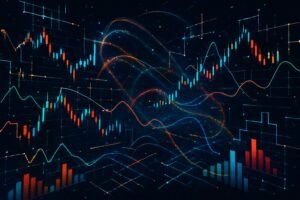
Markets:
Beyond a Single Theory
Why No Single Theory Can Master the Market
Financial markets, unlike the natural world, are not governed by immutable laws. Their behavior is a complex, ever-shifting interplay of human psychology, technological disruption, regulatory changes, and macroeconomic forces. This inherent dynamism is precisely why a unified, all-encompassing theory of investing remains elusive.
1. The Absence of Universal Market Laws
In physics, the law of gravity is constant and predictable. In finance, no such universal truths exist. Market behavior is an emergent property of countless individual decisions, technological advancements, and shifting regulatory landscapes. The rules of the game are in constant flux, preventing the creation of a single, predictive model. This fluidity means that what worked yesterday may not work tomorrow, demanding constant adaptation from investors.
2. The Fragility of Market Relationships
Historical correlations between asset classes, such as the traditional inverse relationship between stocks and bonds, can be remarkably fragile. During periods of economic calm, these relationships may hold, providing a false sense of security. However, they often break down abruptly during crises or significant market stress. A successful investor cannot rely on a single, static model; they must anticipate and adapt to these shifting correlations as different economic regimes emerge.
3. The Unpredictable Role of Human Psychology
Behavioral economics has demonstrated conclusively that markets are not always rational. Cognitive biases, emotional swings, and herd behavior can drive asset prices far from their intrinsic values. Nobel laureates and leading psychologists have highlighted how potent forces like overconfidence, fear, and greed can overwhelm rational analysis, particularly at market extremes. These deeply human impulses defy the neat mathematical descriptions that a unified theory would require.
4. Markets as Self-Influencing Systems
Markets are not passive mechanisms; they are dynamic, reflexive systems. This means that investors’ perceptions and actions can, in and of themselves, alter market fundamentals. George Soros’s theory of “reflexivity” powerfully explains this feedback loop: rising prices can attract more buyers, creating a self-reinforcing bubble that is detached from reality. Conversely, widespread fear can trigger selling that exacerbates a downturn. This endogenous instability, where the market influences its participants and is in turn influenced by them, makes it inherently unpredictable.
5. An Evolving, Multi-Tool Approach
In the absence of a single grand theory, sophisticated investors adopt a pluralistic and adaptive “toolbox” approach. This involves drawing on various models and frameworks, each suited to a different aspect of market complexity:
- The Adaptive Market Hypothesis applies principles of evolution, suggesting that strategies succeed or fail based on the current market environment.
- Value investing, pioneered by Benjamin Graham and famously practiced by Warren Buffett, focuses on identifying and acquiring assets for less than their intrinsic worth.
- Quantitative and stochastic models are used to manage volatility and assess the risk of extreme price movements (“tail risks”).
- Tail-risk hedging, championed by thinkers like Nassim Nicholas Taleb, provides strategies to protect portfolios from rare but catastrophic events.
No single tool can capture the entire picture, but together they offer a more robust way to navigate market uncertainty.
6. The Primacy of Uncertainty Over Risk
A fundamental challenge in financial modeling is the distinction between risk and uncertainty. Risk can be calculated using historical data and probability distributions. Uncertainty, however, refers to future events for which there is no precedent, making them impossible to model with precision. Markets are dominated by uncertainty—the future is shaped by novel technologies, unforeseen geopolitical events, and evolving human behavior. This reality limits the usefulness of purely probabilistic models and underscores the need for heuristics, scenario analysis, and a mindset of continuous adaptation.
What This Means for Investors
The lack of a unified theory is not a failure of finance, but a fundamental feature of markets. For investors, this reality carries critical implications:
- Diversify Your Models, Not Just Your Assets: Rely on a blend of valuation techniques, macroeconomic analysis, sentiment indicators, and quantitative tools. No single perspective is sufficient.
- Stress Test Relentlessly: Constantly challenge your assumptions. Run scenarios that simulate regime shifts, liquidity crises, and the bursting of asset bubbles.
- Actively Manage Extreme Risks: Do not assume that catastrophic events are too rare to matter. Employ deliberate hedging strategies or other forms of portfolio insurance to protect against tail risks.
- Stay Humble and Iterative: The most successful investors are perpetual learners. They continuously measure their results, update their strategies, and acknowledge what they cannot know.
The Bottom Line
Markets are living, adaptive systems driven by the complex and often unpredictable nature of human decisions, structural changes, and inherent instability. The quest for a single “theory of everything” in finance is a futile one. The wisest investors do not search for a perfect model; instead, they build and refine an eclectic, resilient toolkit to navigate the complexities they face.
Mike Voss
